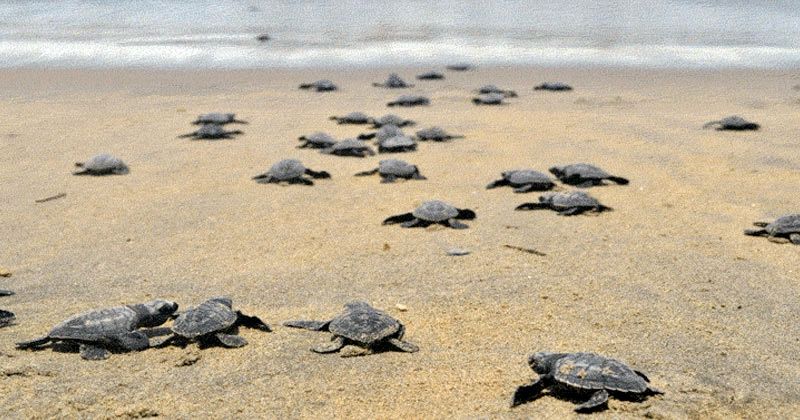On Wednesday (April 9), Cox’s Bazar witnessed a significant step in marine conservation when 250 Olive Ridley turtle hatchlings were released into the sea at Inani Beach. The Cox’s Bazar Forest Department led the initiative in collaboration with Nature Conservation Management (NACOM). The hatchlings were nurtured in a specialized nursery before being set free.
Dr. Molya Rezaul Karim, the Conservator of Forests for the Chattogram region, was present during the release. Speaking at the event, he emphasized the importance of Olive Ridley turtles in maintaining the ecological balance of the Bay of Bengal.
“The Olive Ridley turtle is a vital part of the Bay of Bengal’s marine biodiversity. Protecting these creatures ensures the preservation of the ocean’s natural ecosystem,” he said.
These sea turtles migrate to sandy coastal shores each winter to lay eggs. However, their nesting sites are increasingly threatened by stray dog attacks, human activity, and environmental disruptions, leading to high mortality rates among mother turtles and their eggs.
Among those present at the release event were Mohammad Nurul Islam, Divisional Forest Officer of the Cox’s Bazar South Forest Division; Mohammad Badruzzaman, District Fisheries Officer of Cox’s Bazar; Abdul Kaiyum, Manager of Natural Resource Management and Climate Change at NACOM; and other officials from the Cox’s Bazar South Forest Division.
According to NACOM’s Abdul Kaiyum, eggs were collected from 12 different locations along the Cox’s Bazar coastline, resulting in the successful hatching and release of over 6,000 baby turtles so far.
Cox’s Bazar, home to the world’s longest unbroken sea beach, remains a crucial nesting ground for Olive Ridley turtles. To safeguard these nesting turtles and provide a secure environment for hatching, the Cox’s Bazar Forest Department and NACOM have established nurseries at over 12 locations stretching from Cox’s Bazar to Teknaf. So far, 26,770 eggs have been collected and carefully incubated under specialized conservation measures, leading to the hatching of more than 6,000 baby turtles.
Despite conservation efforts, recent surveys indicate a worrying decline in nesting sites. While a decade ago, sea turtles were known to lay eggs in 52 different spots, the number has now dropped to just 34—a clear sign of growing threats to their natural habitat. Conservationists stress the urgent need for continued protection efforts to ensure the survival of this endangered species.
By Abdur Rashid Manik
File Photo










